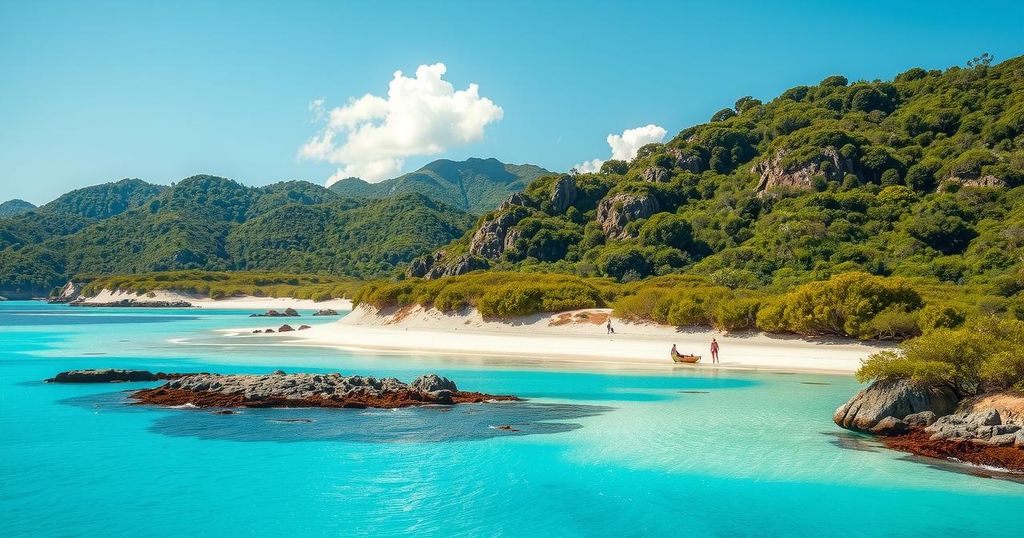World news
AFRICA, ASHBURTON, AUSTRALIA, AUSTRALIAN RADIATION PROTECTION AND NUCLEAR SAFETY AGENCY, CAM MCGURK, CLIMATE, CLIMATE CHANGE, CUBA, EDITH COWAN UNIVERSITY, ENVIRONMENTAL IMPACT, GHANA, MADISON WILLIAMS - HOFFMAN, MARSHALL ISLANDS, MCGURK, MONTEBELLO ISLANDS, NATURAL DISASTERS, NATURE, NORTH AMERICA, OCEANIA, PERTH, SCIENCE, UNIVERSITY, WA, WILLIAMS - HOFFMAN
Michael Grant
0 Comments
Radiation Risks Revealed at Montebello Islands 70 Years After Nuclear Tests
- A recent study finds plutonium levels in Montebello Islands 4,500 times higher than WA coast.
- Radiation contamination from nuclear tests remains a major concern decades later.
- Researchers compare contamination levels to those observed in the Marshall Islands.
- Local officials emphasize the need for caution when visiting affected areas.
- Future studies will focus on the impact of radiation on marine life.
Research Finds Unsettling Levels of Plutonium in Sediments
Radiation Risks Revealed on Montebello Islands After 70 Years Back in the 1950s, the Montebello Islands in Western Australia were the site of three British atomic weapon tests. Now, a new study shows that the contamination from those tests is not just a memory; it’s very much an ongoing concern. According to findings published recently, plutonium levels in the marine sediment are alarmingly high, recording figures up to 4,500 times greater than those found along the untainted WA coast. This revelation raises significant questions about the marine ecosystem and potential health risks for both visitors and locals alike.
Study Compares Montebello to Marshall Islands
Examining the Long-Term Impacts of Nuclear Testing Researchers from Edith Cowan University have undertaken an extensive survey of the area, and they spent eight days collecting sediment samples from various sites. The lead researcher, Madison Williams-Hoffman, stated that their analysis is akin to creating a radiation ‘heat map’ of where plutonium contamination is most severe. Interestingly, they likened some of the radiation concentrations to those seen in the Marshall Islands, a place known for intense nuclear testing, despite the fact that the cumulative effects there were 700 times greater than at Montebello. This begs the question of what makes the environmental conditions on the Montebello Islands different and how they might be influencing the long-term retention of these radionuclides.
Environmental Monitoring Crucial for Biodiversity
Conservation and Monitoring Efforts In light of these findings, the management of the Montebello Islands comes into sharper focus. Tim Hunt, the marine program coordinator at WA Parks and Wildlife, remarked on the challenges of managing radiation risks in such a historically significant area. Although the current regulations limit visitor access to sensitive sites, the ongoing study is critical for future environmental assessments. The researchers plan to delve deeper into how this lingering radiation could affect local marine life, which is vital for both ecology and public health. The next steps include evaluating how sediments could be impacting various species in the area, especially given the awry environmental conditions caused by nuclear testing.
The study conducted on the Montebello Islands reveals significant levels of plutonium that pose potential risks to the local ecology and community. The results underline the enduring legacy of nuclear testing in Australia. As researchers continue to investigate the long-term effects of radiation, it is essential for both authorities and the public to remain informed and aware of the risks associated with these historic sites.




Post Comment